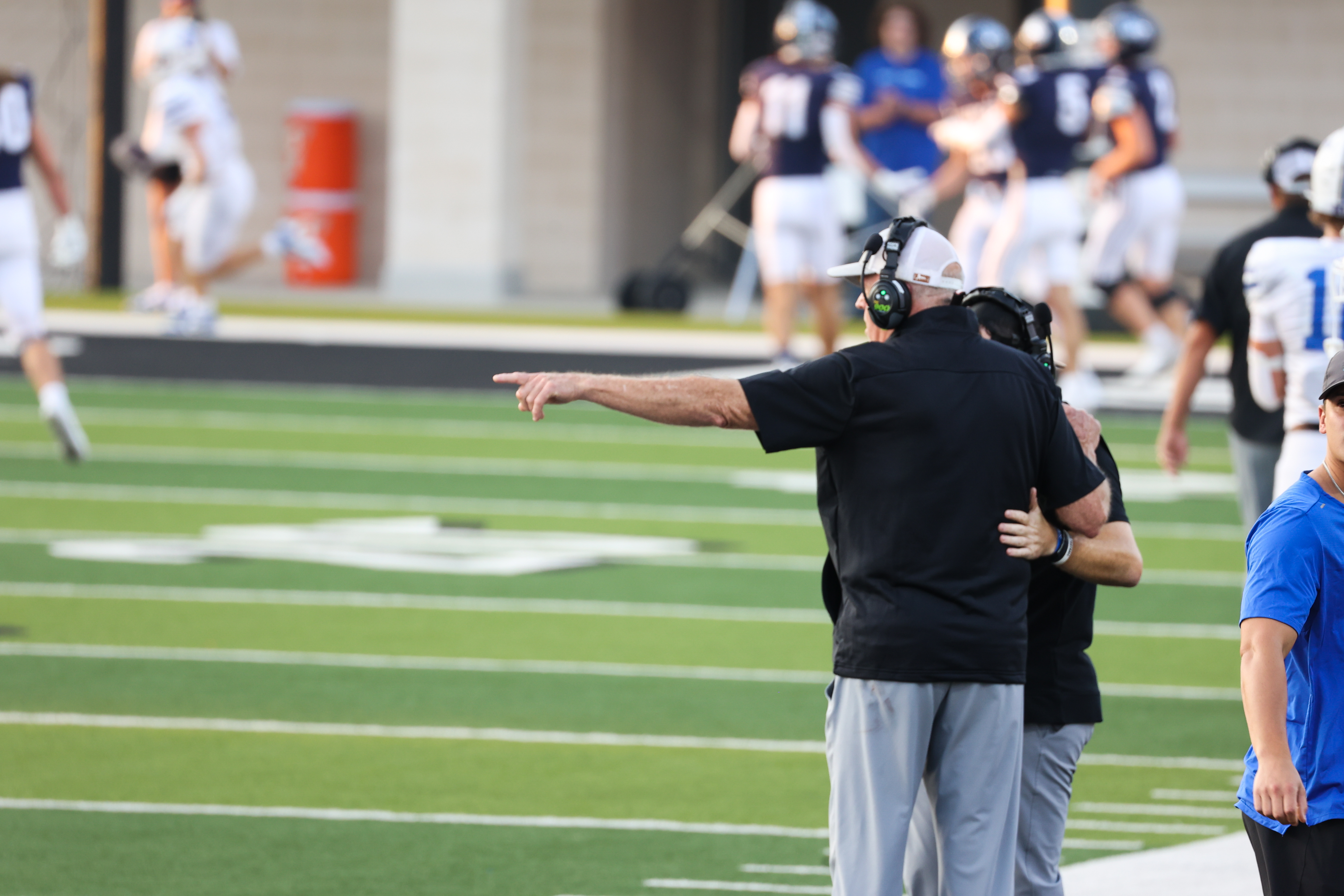This might sound strange, or perhaps even outrageous to you, but I think whether you coach football or simply like to watch it on TV, it helps you read the Bible. Here’s why: through the course of any given game you are exposed to different points of view or different camera angles that give a unique perspective of each play as the game unfolds. Let’s consider three of them: (1) the coach cam, (2) the endzone cam, and (3) the skybox cam. In part one of this article, I will consider the first two lenses. In part two, I will explain the third.
The Coach Cam
Most coaches love being on the sideline when it's game time. Being on the sideline allows for direct communication with players to give instruction and feedback without the need to rely on others to relay what you want to say. It also allows you to observe a player’s decision-making and effort. Your perspective as a coach on the field, physically present with your players, is vital for your team. The value of this vantage point is real-time closeness to the game. The first step in learning to read the Bible well, requires a similar perspective, what I call the coach cam. The coach cam seeks to understand the words of a particular passage of Scripture in their immediate or close context. When reading and studying Scripture from this perspective, consider the following:
- Read and Reread your text: Words only have meaning when considered with the sentences, paragraphs, chapters, and books in which they are used.There’s no substitute for wrestling with a passage of Scripture and seeking to understand it. Ask good questions: Is there an argument being made? Are there commands to be obeyed? Why these verbs? How are the passages structured? What does it teach me about God? How would I summarize it in one sentence? If you can watch the same opponent game film over and over again to produce a meaningful scouting report, you can read the Bible with the same resilience.
- Know what type of text you are reading: Just like it's important for a quarterback to recognize the front and coverage he’s facing before snapping the ball, when reading Scripture, we need to know what type of literature we’re reading. We do not read a dishwasher repair manual the same way we read poetry. There are primarily three different kinds of texts in the Bible: discourse, narrative, and poetry. Know what you’re reading.
- Consider the author and original audience: You want to consider the circumstances that gave rise to the book and cultural features of life at that time. Picking up a good study Bible is really helpful here (such as the ESV or CSB study bibles). Besides offering a concise commentary on particular passages, perhaps their most helpful feature is the one to two page introductions they offer for each biblical book that help us understand the setting, background, key themes, and purpose of the book before we explore its particularities.
The Endzone Cam
Although most coaches love being on the sideline when it's game time, they also realize it’s not the only perspective needed for success. When prepping for an opponent or critiquing their own players' performance, having the perspective of an endzone camera can be insightful. The view from an endzone cam reveals details about formations, player movements, and decision-making that are missed from ground level, the coach cam. The value of this vantage point is the ability to analyze how plays develop from start to finish, on either side of the ball. The second step in learning how to read the Bible well, requires a similar perspective. The endzone cam seeks to understand a given passage of Scripture according to the Bible’s unfolding story, or its continuing context. This lens focuses on two things: (1) how any given passage of Scripture fits into the Bible’s main plot movements (creation, fall, redemption, and consummation) and (2) its covenantal context (how God brings order, direction, and focus to the unfolding story of redemption through a series of promise-shaped relationships between significant individuals or parties in the biblical story).
Creation, Fall, Redemption, and Consummation
These four plot movements help us think about the Bible’s unique worldview in relation to others. Which means these categories also help us answer life’s ultimate questions: (1) where did I come from (creation)? (2) what’s wrong with me and the world around me (the fall into sin)? (3) what’s the solution? (redemption in Christ) (4) what’s my hope? (new creation). Good Bible readers interpret individual parts of Scripture in light of this larger story: the creator God promised to redeem sinful and fallen humanity through the life, death, and resurrection of his son, Jesus Christ. All who have faith in him may have eternal life and never-ending hope.
The Covenantal Storyline
If, as Steve Wellum and Trent Hunter note, “The Bible’s four plot movements give us the rough outlines of the skeleton that underlies the Bible’s structure,” the biblical covenants “are the backbone of Scripture’s grand story, holding its four-part skeleton together.” Okay, but what is a covenant? A covenant is a chosen relationship between two parties ordered according to specific promises. There are six primary covenants in Scripture (1) Adamic, (2) Noahic, (3) Abrahamic, (4) Mosaic, (5) Davidic, and (6) the new covenant in Christ. Why does this matter? The covenants progressively reveal the nature of God and his one plan of salvation. The covenants include many different things, such as laws and commands, blessings and curses, but most importantly, in numerous ways, they reveal who the messiah (Jesus) is, the need he comes to address, and what he does to bring sinners to himself. As we read the Bible’s story, we are always asking ourselves, “How does this covenant reveal the God who saves and the Savior he sends?” Every passage of Scripture we read falls in a particular covenantal context, which is important in order to understand how God is moving the story from Adam to Christ, from creation to new creation (or consummation).
Conclusion
Those are the first two camera angles. The coach cam (the close or immediate context) helps us understand the context and particular features of a given text of Scripture. The endzone cam (continuing context) helps us locate where our text lands and how it contributes to the Bible’s main plot movements (creation, fall, redemption, and consummation) and unfolding story (covenants).



 Caleb Lenard
Caleb Lenard



